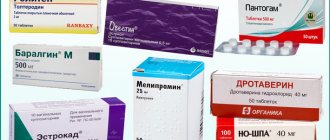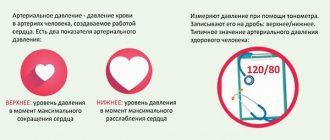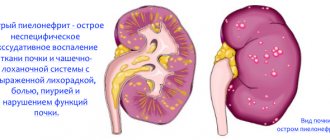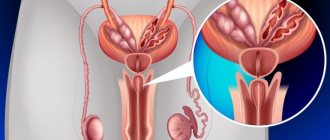After giving birth, a woman may not feel the urge to go to the toilet at all, even when her bladder is already full.
This is due to the fact that the pressure of the uterus on the bladder disappears, the tone of the bladder decreases, it increases in size, swells and begins to accumulate a lot of fluid. Its sensitivity may be reduced due to the use of painkillers during labor, muscle spasms, or fear of pain.
This problem does not require special treatment: gradually the tone of the bladder increases, swelling subsides, and urination returns to normal. At first, you just need to regularly remind yourself that you need to go to the toilet.
- Frequent urge to go to the toilet.
Frequent and copious urination in the first days after childbirth indicates the removal of excess fluid from the body. If you want to go to the toilet often, but the amount of urine is scanty, it is better to consult a doctor, as this may be a sign of the onset of inflammation of the bladder or urethra.
- Pain when urinating.
Most often, burning and pain are explained by urine getting on abrasions that appeared during childbirth and unhealed sutures. To reduce discomfort, you can urinate while standing in the shower, with your legs spread wide apart so that the stream of urine does not touch the external genitalia.
If pain when urinating does not go away after the abrasions and stitches heal (usually on the second or third day) or the bladder itself hurts, this may be a symptom of urethritis or cystitis.
- Urinary incontinence (bladder atony).
After natural childbirth, the pelvic floor muscles stretch and lose elasticity, easing pressure on the bladder and urethra. As a result, the bladder loses its ability to close completely, so a few drops of urine may be released when laughing or coughing. Many women feel embarrassed about this delicate problem, but in fact, it can be dealt with with the help of sanitary pads and Kegel exercises.
How to speed up recovery of bladder function
- Try to empty your bladder as quickly as possible after giving birth - this will stimulate the uterus to contract and protect the urinary organs from infection.
If you have difficulty getting up, use a bedpan, not a cold one, but a preheated one. Urination can be caused reflexively - by the sound of pouring water. If you are unable to go to the toilet on your own, tell the nurse who will insert the catheter.
- Train your bladder: do not reduce the amount of fluid you consume, especially if you are breastfeeding.
- Force your bladder to work: In the first days after giving birth, go to the toilet every two hours, even if you don’t feel the urge.
- Walk more: this stimulates normal bowel and bladder function.
- Perform special exercises to strengthen your pelvic floor muscles - Kegel exercises.
While lying down or sitting, tighten the muscles of the vagina and anus as if you were holding back urination, hold in this position for a few seconds, and then completely relax the muscles. When performing exercises, do not tense your stomach and buttocks or move your legs together. It is recommended to do Kegel exercises at least 3 times a day, and preferably more often. It is optimal to perform 8–10 muscle contractions in one approach.
- Avoid drinking drinks and foods that irritate the bladder - coffee, spicy seasonings, pickles, smoked meats.
Restoring normal functioning of the bladder can take from several days to one to one and a half months. If incontinence does not go away during this time, you need to inform your gynecologist about this at a routine examination, which usually occurs six weeks after birth.
- after healing of tears or cuts in the perineum, you still experience pain or burning in the urethra or in the bladder area;
- the urge to urinate is frequent, but the amount of urine produced is scanty;
- urine is cloudy and has a sharp, unpleasant odor;
- body temperature is increased, even slightly.
The listed symptoms may be a sign of the development of a urinary tract infection, which without proper treatment will cause pyelonephritis. Treatment today can be successfully combined with breastfeeding, so do not be afraid to seek medical help if your bladder does not work like a charm after childbirth.
For 80% of women, pain when urinating after cesarean section (CS) becomes a real problem. If in the last stages of pregnancy you are tormented by the urge to go to the toilet every half hour, then after childbirth the situation changes dramatically. Young mothers experience many negative sensations: pain, stinging, burning, nagging pain in the scar area, etc. All these unpleasant feelings are mainly natural consequences of surgery and should go away within a few days. However, such symptoms may indicate serious complications, so you should additionally consult your doctor.
Causes of urinary pathologies after CS
During pregnancy, the bladder is subject to a large load, which negatively affects the condition of its blood vessels and nerve endings. Therefore, after childbirth - both natural and after cesarean section - it takes some time to restore normal urination. The catheter, which is necessarily used during surgery, is also a traumatic factor. It can cause complications if placed incorrectly and damage the urinary canal or cause infection. The quality and location of the suture on the uterus also plays an important role.
The main problem is infection
Due to weakened immunity, women in the postpartum period are especially susceptible to infectious diseases. The risk increases with large blood loss and if there were illnesses during pregnancy. Usually, to avoid inflammatory processes, to be on the safe side, women in labor are prescribed a course of antibiotics. Inflammation in the pelvic area causes sharp cutting pain when urinating and can cause urinary incontinence. The most common complications are:
- inflammatory processes in the uterus, urethra, peritoneum, pelvic veins or kidneys;
- mastitis.
When the problem lies elsewhere
At the first sign of urinary problems, you should consult a doctor.
Non-infectious causes of urinary pathology include physical damage to the urethra by a catheter, damage to the bladder when removing a child. Physical and psychological stress also negatively affect urination. Impaired muscle tone after anesthesia and incorrect functioning of the nerve fibers that transmit a signal to the brain about low need lead to the fact that the woman does not realize the need to go to the toilet. An overfilled bladder brings additional pain and threatens the development of incontinence. In this regard, it is important to follow the recommendations of the medical staff and initially visit the restroom every 2 hours.
Complications of cystitis
Under unfavorable conditions, the course of cystitis can become more complicated. In this case, pathogens enter the kidney, which leads to the development of acute pyelonephritis - a nonspecific infectious inflammation of the pyelocaliceal system and renal parenchyma. Microorganisms can enter the kidney in two ways:
- through blood vessels (hematogenous route);
- with the development/presence of vesicoureteral reflux - backflow of urine from the bladder into the ureter, kidney - ascending route of infection (so-called reflux - pyelonephritis).
Characteristic manifestations of acute pyelonephritis are a sudden increase in body temperature to 38-39 degrees and above, accompanied by “stunning” chills. Patients often complain of pain in the lumbar region, nausea, and vomiting. It is important to remember that acute pyelonephritis is an emergency pathology and a direct indication for hospitalization. Therefore, even with a single episode of an increase in body temperature to the specified numbers with chills occurring against the background of symptoms of acute cystitis, especially in the postpartum period, it is necessary to be hospitalized in a hospital for emergency reasons.
Possible problems
If, a week after the operation, the pain when urinating has not decreased, but, on the contrary, has intensified or changed, moved to other areas, this may indicate the presence of serious pathologies.
Since after childbirth the woman is under the supervision of doctors, the likelihood that they will not pay attention to the existing pathology is extremely small. However, you must follow your doctor's instructions exactly and report any unusual or painful sensations. Within 4-6 weeks, the young mother’s condition should return to normal. But you should contact a specialist earlier if:
- after a cesarean section, unusual discharge appeared, accompanied by an unpleasant odor;
- body temperature does not fall below 37ºС;
- going to the toilet is accompanied by pain or discomfort for a long time;
- when the bladder is full, third-party pain appears - the lower back is pulled or the postoperative scar is bothering you - perhaps painful urination indicates pyelonephritis or improper tissue fusion.
First, let's figure out how the urinary system works. It includes a number of organs: kidneys, ureters, bladder and urethra.
The kidney is a paired organ, shaped like a bean, its size is slightly smaller than a fist. The kidneys are located in the retroperitoneal space. Figuring out where this place is is not at all difficult. The peritoneum is a thin film-like structure of connective tissue that covers all the organs of the abdominal cavity, as if creating a sac for them. The kidneys are located outside this sac, at the level of the lower back, so kidney diseases often manifest as pain in this area on the right or left.
The main function of the kidneys is to produce urine. Large blood vessels approach the kidneys, and the blood is filtered through the kidney, while various harmful substances that need to be removed from the body are retained in it. The kidneys perform this function thanks to their structure, the elementary functional unit of which is the nephron - a system that includes a glomerulus of thin vessels (capillaries). In the kidneys, all the blood that flows through the vessels is filtered through a special membrane; from the glomerulus, the filtrate (primary urine) enters the tubular system, where most of the primary filtrate is absorbed back into the bloodstream. The tubules end in the calyces and pelvis, which collect urine before leaving the kidney into the ureter. This is how urine is formed.
From each kidney, a ureter extends downwards - a narrow tube through which urine enters the bladder. The lumen of the ureter is 4–6 mm, the length is about 30 cm. Both ureters empty into the bladder.
The bladder is a hollow muscular organ located in the lower abdomen behind the pubis. Depending on the amount of urine, the bladder can expand and contract. In different people, it can hold from 250 to 500 ml of urine. When the bladder fills, a person usually feels the urge to urinate. As already mentioned, two ureters empty into the bladder. The lower part of the bladder narrows, forming a so-called neck, which passes into the urethra (urethra). It is also a hollow tube through which urine leaves the human body. Moreover, at the beginning of this tube - at the exit from the bladder and at the end - in the perineum, the urethra has so-called sphincters - circular muscles. A person cannot control the first sphincter, but with the help of the second one can consciously delay urination. In women, the urethra is short (3–4 cm) and wide (10–15 mm).
With inflammation of the bladder and urethra, pain and cramping in the lower abdomen during urination and frequent false urge to urinate appear.
How the urinary system changes during pregnancy
During pregnancy, a woman’s urinary system has to work under increased load: it removes metabolic products not only from the expectant mother, but also from the fetus. The kidneys need to filter 35–40% more blood than outside pregnancy. The growing uterus affects the position of the ureters and bladder; these organs are difficult to move (unlike, for example, the intestines), which makes their work difficult during pregnancy, since the pregnant uterus does not push them away, but compresses them.
The amount of urine changes during pregnancy: it increases in the first trimester, returns to its original values in the second trimester, and decreases at the end of pregnancy.
Late in pregnancy, protein may appear in the urine (proteinuria). This phenomenon can be considered physiological if it is not accompanied by edema, increased blood pressure and the appearance of leukocytes and red blood cells in the urine, and the amount of protein does not exceed 0.3–0.5 g/l. After childbirth, protein is normally not detected in the urine.
While carrying a baby, the cups and pelvis - the containers that collect urine inside the kidney - expand significantly, this process is especially pronounced in the second trimester of pregnancy - this allows for the accumulation of significantly more urine. They remain in this state until approximately 12–14 weeks after birth. Changes do not bypass the ureters. During pregnancy, they “grow”: they become wider and longer, bending, bypassing the enlarging uterus.
As a result of the described changes occurring in the urinary system, the outflow of urine from the kidneys and ureters worsens, and backflow (reflux) of urine from the bladder into the ureters may occur.
There are also changes in the bladder during pregnancy - its mucous membrane becomes more susceptible to various lesions, including inflammation.
After childbirth, the urinary tract gradually returns to its normal state. They fully return to normal on average by the end of the 16th week after the baby is born. If the ureters remain dilated after this period, there may be other reasons for this, which it is advisable to find by undergoing a urological examination. It should be noted that, despite such a significant expansion of the renal pelvis and ureters, in most cases this does not affect the sensations of a pregnant woman in any way.
However, all the described changes are predisposing factors for the development of infectious and inflammatory changes in the urinary system both during pregnancy and after childbirth.
What happens to the urinary system during childbirth?
During childbirth, the organs of the urinary system also undergo significant changes: for example, the baby's head, moving along the birth canal, puts pressure on the bladder and urethra. As a result of such mechanical action, these organs of the urinary system lose sensitivity. And if epidural anesthesia was also used during childbirth, the loss of sensitivity is aggravated. This is why women who have just given birth often do not feel the urge to urinate even with a very full bladder.
During all births, vaginal examinations are performed regularly (at least every 6 hours); during the birth of the head and immediately after the birth of the baby and placenta, various medical procedures are performed in the perineal area, including a catheter being inserted into the bladder to force it to empty. This is necessary given the loss of sensation described above.
These factors, in addition to all the above-described anatomical and physiological changes that occur during pregnancy, predispose to the development of infectious and inflammatory diseases of the urinary system, as they contribute to the disruption of the timely outflow of urine and infection in the urinary tract.
4 possible problems with the urinary system after childbirth
1. After childbirth, a young mother, as a rule, does not actually feel the urge to urinate.
In turn, a full bladder prevents normal contraction of the postpartum uterus and is a risk factor for uterine bleeding, as well as the occurrence of infectious and inflammatory complications of the uterus. In addition, it contributes to the development of inflammation of the urinary tract (bladder and urethra).
Advice.
To avoid such troubles, it is necessary to force the bladder to work. There is nothing complicated here - you just need to go to the toilet every 2-3 hours, even if you don’t want to. To do this, you can set an alarm on your phone at a specified interval so as not to forget about the need to go to the toilet. To prevent urination attempts from being futile, you can turn on the water, since the sound of pouring water reflexively helps to relax the bladder sphincter and initiates urination.
2. In the first days after childbirth, before the establishment of lactation - changing colostrum to milk, establishing a feeding regimen, young mothers are usually recommended to slightly reduce the amount of fluid consumed (up to 1 liter per day). Even under these conditions, do not forget that you need to empty your bladder regularly.
If sutures have been placed on the perineum or vaginal wall, then in this area there may be a feeling of pain and burning when urinating. This is due to the fact that urine has an irritating effect on existing wounds. This problem can occur immediately after childbirth and bother you in the first 2-3 days.
Advice.
To solve this problem, you can urinate in the shower or under running water.
3. If pain when urinating is accompanied by pain in the bladder area,
frequent, possibly false urge to urinate, while the amount of urine released is negligible, the urine changes color, smell, contains an admixture of blood, then cystitis or cystourethritis can be suspected - inflammation of the mucous membrane of the bladder and urethra.
Advice.
If such symptoms appear, it is imperative to consult a doctor, since inflammation of the lower parts of the urinary system can quickly spread to the overlying organs, in particular the kidneys, with the development of inflammation of the kidney tissue - pyelonephritis. Antibiotics are traditionally used to treat cystitis. The doctor will select a drug whose use will not interfere with breastfeeding.
4. After giving birth, a young mother may experience urinary incontinence.
– its involuntary release during laughter, sneezing, coughing and physical activity. Incontinence may be caused by overextension, weakness of the perineal muscles, or trauma to the perineum. In any case, this symptom should be a reason to consult a doctor. At the first examination, the doctor will assess how serious the situation is.
Advice.
If there are no serious injuries to the perineum, it is recommended to do Kegel exercises to train the pelvic floor muscles, which help restore their tone. If this tactic is ineffective, after a few months the question of surgical treatment may arise.
It is important to remember that regular, timely medical supervision during pregnancy and compliance with the specified recommendations for hygiene of the urinary organs will help to avoid unnecessary problems after childbirth.
Kegel exercises
These exercises can be started immediately after childbirth, if there are no stitches in the perineum. If there are stitches, you must wait until the doctor allows them to be performed - usually this happens 10 days after birth. By the way, such training in most cases can be done during pregnancy.
To understand how to do the exercises, it will be enough to voluntarily hold urination once. At the same time, it is not difficult to understand which muscles should be tensed when doing exercises. It is these compressions and relaxations of the perineum that should be performed, starting from 10 times, gradually increasing their number daily to a hundred. It will be useful to learn how to perform tension-compression separately on the muscles of the rectum, separately on the vagina.
How to avoid inflammation in the urinary system?
Taking into account all the factors that predispose to the development of infectious and inflammatory diseases of the urinary system, which form during pregnancy and childbirth and do not lose relevance after them, it is necessary:
- regularly during pregnancy take all necessary tests, including urine tests;
- promptly treat all foci of infection during pregnancy;
- observe the rules of personal hygiene during pregnancy and after childbirth: when washing, all movements should be directed from front to back - from the urethra to the rectum. After giving birth, you should wash yourself after every urination for the first 7–10 days.
A young mother experiences real happiness after the birth of a child, but sometimes illnesses occur that prevent her from receiving well-deserved pleasure. Quite often one has to deal with various diseases of the genitourinary system, among which it is necessary to highlight urinary disorders (usually there is pain and a disturbance in the frequency of urges). These conditions require medical supervision, as they may be symptoms of dangerous diseases.
Treatment of cystitis
Antibacterial drugs and uroseptics are traditionally used to treat cystitis. The doctor will select a drug whose use does not exclude breastfeeding.
Local therapy is also used, consisting of instillations, i.e. in the introduction into the bladder of special solutions containing various medicinal substances that have an antimicrobial effect.
In parallel, treatment of bacterial vaginosis and sexually transmitted infections is carried out.
To prevent repeated episodes of acute cystitis, when the first signs of the disease appear, it is necessary to visit a urologist and gynecologist and carry out the prescribed treatment in full.
What problems may arise with urination after childbirth?
Here are some of the most common bladder problems you may encounter after giving birth.
Frequent urge to urinate.
If the first time after giving birth you very often want to go to the toilet, and at the same time a normal amount of urine comes out, everything is fine. This way the body gets rid of excess fluid. But if you want to go to the toilet often, but very little fluid comes out, this may be a symptom of inflammation.
No urge to urinate.
After childbirth, the bladder loses the ability to feel the need to empty due to a decrease in its tone, lack of uterine pressure, and this can also be affected by the use of painkillers during childbirth. This way, even when your bladder is full, you don't feel the need to go to the toilet. Usually bladder sensitivity will be restored, but by then you will have to force yourself to go to the toilet a little.
Pain when urinating.
If you had any cracks or tears during childbirth, or if your perineum was cut and stitched, you may experience pain if urine gets into the wounds. To avoid this, try urinating while showering. If the pain continues after the wounds have healed, this may indicate inflammatory processes.
Incontinence.
If you had a fast labor or your baby was born quite large, this could strain the muscles that normally keep your bladder from leaking urine.
This problem is common, but many women are embarrassed by it. This should not be done, consult a doctor, they will tell you about special exercises to restore muscle elasticity. Over time, normal bladder function will return, which may take about a month and a half, but you can help the body speed up the process:
- try to urinate at least once every 2-3 hours, even if you don’t feel the urge to urinate;
- exclude coffee, alcoholic beverages, as well as spicy foods and spices from your diet;
- perform special gymnastics - Kegel exercise. Its essence is the tension of the vaginal muscles. If it is difficult for you to imagine this process, try to interrupt the flow of urine during urination - this can be achieved just by tensing the vaginal muscles. Repeat this action throughout the day as often as possible;
- try to walk more, walk more.
Diagnosis of cystitis
In the vast majority of cases, the diagnosis of acute cystitis does not cause difficulties, since the symptoms of the disease are very specific. However, to confirm the diagnosis, it is necessary to take a urine test, which will reveal an increased number of white blood cells and possibly identify red blood cells. To prescribe the correct antibiotic therapy, it is necessary to do a microbiological analysis of urine, which allows you to identify the sensitivity of the pathogen to a particular antibiotic (urine is placed on a special nutrient medium where the microorganisms that cause cystitis grow, after which the sensitivity of the microbes to antibiotics is examined). As instrumental methods of examination for acute cystitis, ultrasound examination and cystoscopy can be used (a study during which the bladder and urethra are examined with the help of a special device - a cystoscope). However, most often the examination is limited to the study of laboratory test data.
It is very important that during the examination, a woman suffering from cystitis undergoes tests to assess the state of the vaginal microflora and the presence of sexually transmitted infections.










